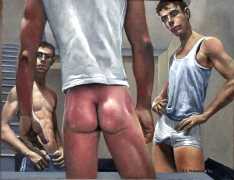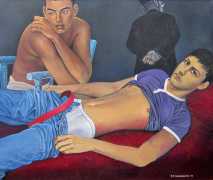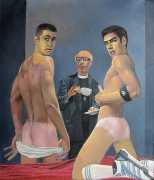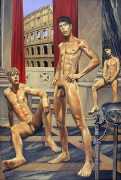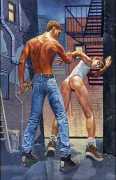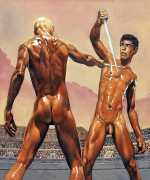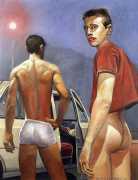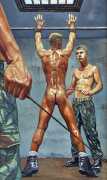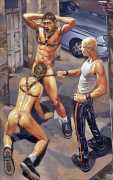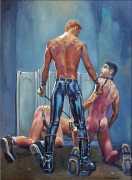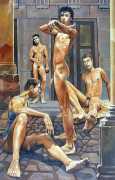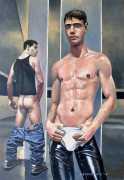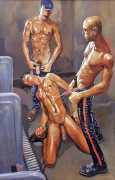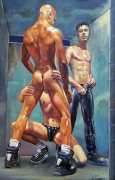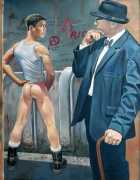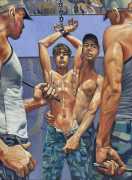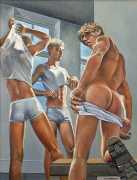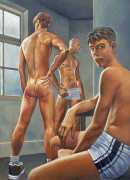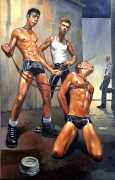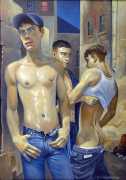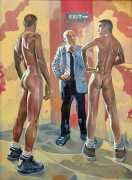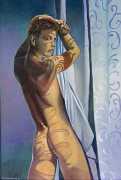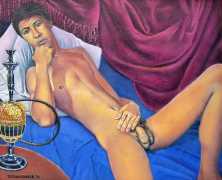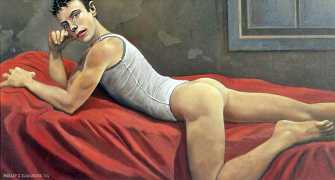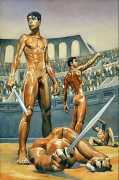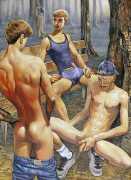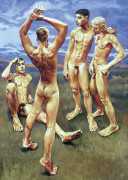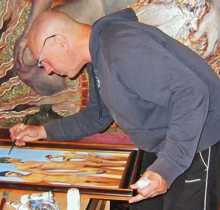 The South Africa born artist Philip Swarbrick grew up in Durban, and knew from an early age that he was gay. As a teenager he regularly visited Rocket Hut Beach, half a mile from where he lived, which was inhabited by mainly male sunbathers who sprawled out in the sanctuary of the sand dunes. The male form he admired and which featured in his early drawings fused with his progressively emerging homosexuality, but the drawings disturbed his family and peers, so his venture into this sort of art was abruptly curtailed.
The South Africa born artist Philip Swarbrick grew up in Durban, and knew from an early age that he was gay. As a teenager he regularly visited Rocket Hut Beach, half a mile from where he lived, which was inhabited by mainly male sunbathers who sprawled out in the sanctuary of the sand dunes. The male form he admired and which featured in his early drawings fused with his progressively emerging homosexuality, but the drawings disturbed his family and peers, so his venture into this sort of art was abruptly curtailed.
As he grew older, his daytime and nocturnal activities on Rocket Hut Beach increased despite draconian laws forbidding homosexual contact. He was conscripted into the South Africa Police, and teamed up with like-minded officers who regularly raided the numerous cruising areas around Durban. As he became more politically aware, enforcing apartheid became impossible, and in 1982 he left South Africa for England.
As he explains, ‘During this period I neglected the homosexual content of my work and concentrated on anti-apartheid themes. My first one-man exhibition was entitled Witness to Apartheid and Post-Modern Blues, at the Balham Gallery in London in 1987. I went on to work as an illustrator for the AD Comics Group, and eventually became an art lecturer and Head of Art History at New College, Swindon. My peers in the nearby town of Malmesbury, where I was comfortably ensconced in an eighteenth century cottage, criticised me for neglecting my painting talent in favour of education and security, and it was after a furious outburst by the painter Peter Harris that I determined to change my ways. He demanded that I ‘stop farting about’ and concentrate on my painting. Soon I was seething with anger that I had been so diverted from my original quest and passion. Through Harris’s publisher I met Michael Leonard, whose male art I greatly admired. I took voluntary redundancy so that I could concentrate my energies on painting rather than teaching, swapping my house and lectureship for a bedsit, a street-sweeping job – and art.’
We are very grateful to our Russian friend Yuri for introducing us to the work of this artist and supplying the images.


